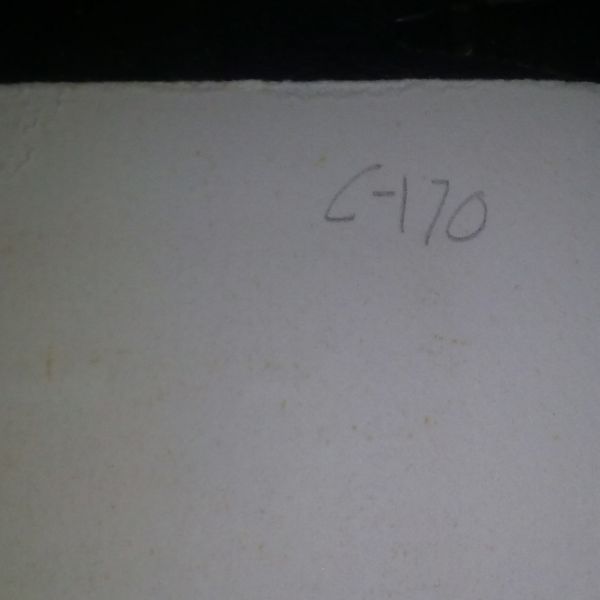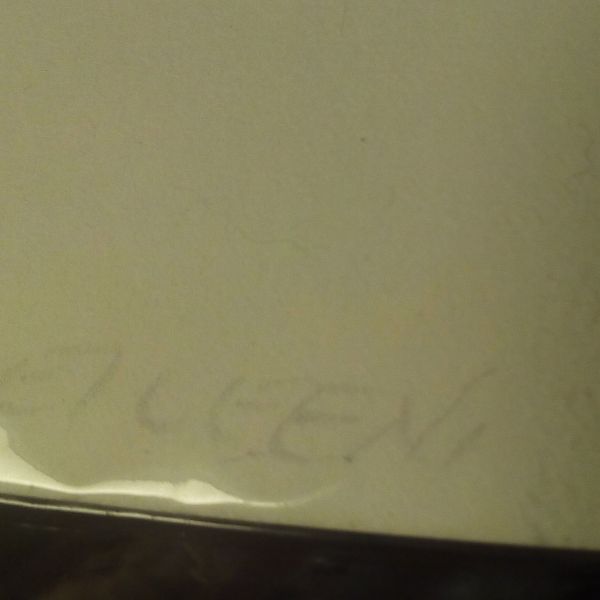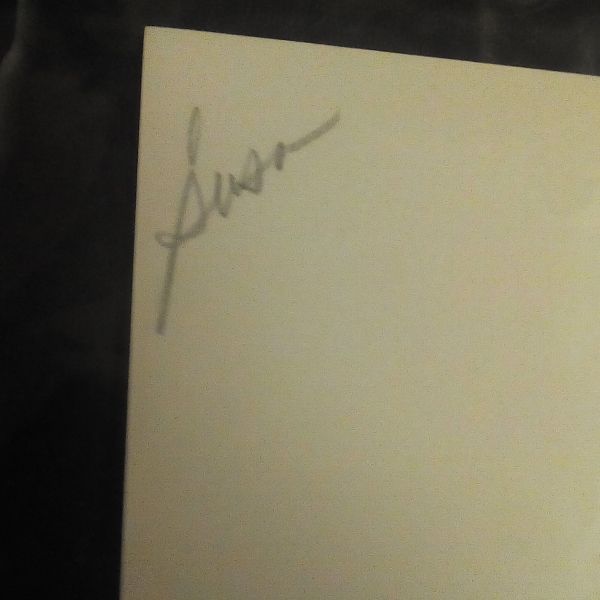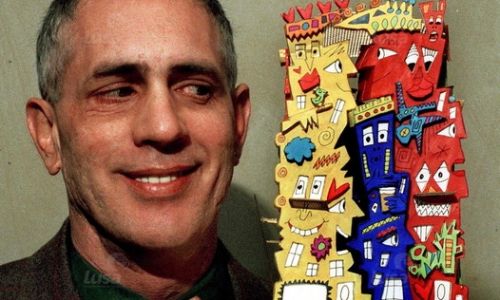
James Rizzi's technique developed over the course of his entire life, but it really started to first crystallize during his college years in Florida where Rizzi discovered the unique combination of print and sculpture.
As it happens, Rizzi had many finals due at once, and not enough time to do an adequate job on all of them, so he decided to get creative. Rizzi had to submit a final project to a sculpturing class, a painting class, and a printmaking class. Like any college student under pressure, Rizzi looked for a way to get 3 birds with 1 stone!
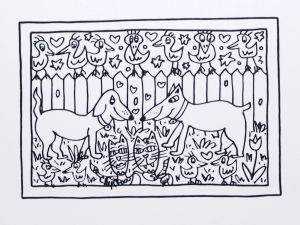
Rizzi painted a scene, traced it to create the silkscreen stencil, silk-screened it and then cut out pieces from the duplicate silkscreen and glued them to the flat painting using cardboard layers in between.
This is the combination and moment that helped Rizzi define his unique style, and start his climb to the top of the pop-art world. His technique would develop and evolve over the years, for example the cardboard layers would become foam pad stand-offs, and the creation/manufacturing/construction process would be refined full circle from art to science.
Rizzi was known to use "cutters", who were friends and helpers that would assist him in cutting out the 3d parts from flat silkscreen prints. In his productions, Rizzi would make a painting, and then send it to the printer who would make flat silkscreen recreations. There would be twice as many prints as the editions in the series because each flat piece would require a duplicate to cut out the 3d pieces.
Rizzi was also known to open his home in soho NYC to wayward girls, some of whom would come and go, and some would live with him for years and even until his death. Beside his traditional cutters, Rizzi also employed these girls as cutters. A little known fact about Rizzi pieces, is that the cutters would sign the back of the flat that matched the one they cut. There were about 20 or so cutters in all, and the pieces done by the girls tend to have a special air about them since they would work in the same space with Rizzi and knew him more intimately than his workers.
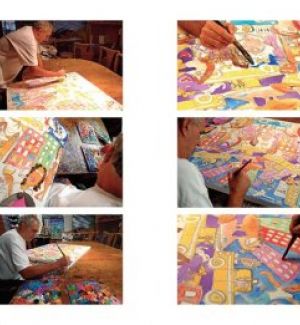
Rizzi later progressed to making magnetic 3d pieces, similar to refrigerator magnets, where the cutout parts would be movable by the owner/collector for reinterpretations and just all-around fun. He also made wooden sculptures of his iconic characters, buildings and birds and would paint incessantly, having been known to say on many occasions and in print that he would paint "whatever he could get his hands on".
